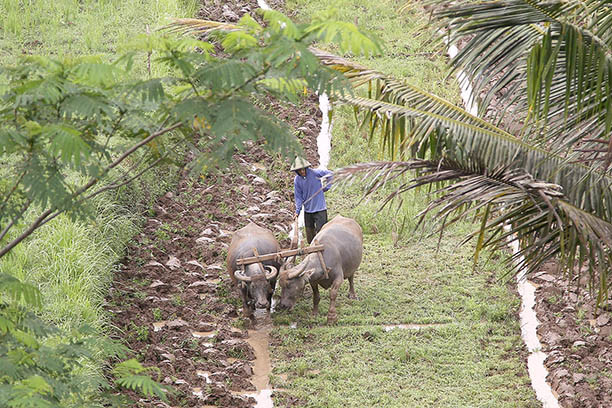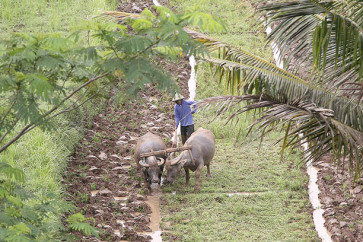Popular Reads
Top Results
Can't find what you're looking for?
View all search resultsPopular Reads
Top Results
Can't find what you're looking for?
View all search results[ANALYSIS] Promoting agriculture to solve the economy vs. pandemic dilemma
The data points to agriculture as the key to solving the dilemma between economic growth and increased COVID-19 transmission.
Change text size
Gift Premium Articles
to Anyone
P
ushing the economy to grow higher is a dilemma these days. On the one hand, if we encourage more consumption and production activities to grow the economy, this could imply more intensive community interaction and mobility that would be highly likely to lead to an increase in new COVID-19 cases.
On the other hand, if we restrict community interaction and mobility to reduce the number of COVID-19 cases, this could pressure economic growth. Subsequently, lower economic growth could lead to higher unemployment, larger social spending for the poor and a larger fiscal deficit.
A study by the office of the Bank Mandiri chief economist clearly indicates that economic growth is negatively associated with COVID-19 infections. Intuitively, we should reduce our mobility by staying at home to reduce the virus’ spread, which subsequently restrict the economic activities of consumption, distribution and production.
Further, 2020 data on economic growth show that some sectors have been severely affected by the community mobility restrictions, such as transportation, hotels and restaurants, trade, construction and corporate services. Meanwhile, other sectors have been affected because consumers are postponing their spending, such as manufacturing, which has faced weak demand.
Consequently, we should be very careful in pushing the economy, as empirical facts show that more economic activities lead to more COVID-19 cases. Above all else, we must instill more discipline in people to follow the health protocols. After that, we should consider which sectors can be promoted during the pandemic.
We think the key to selecting these sectors is determining whether demand for a sector’s products is still strong. As we are well aware, economic uncertainty has been high during the pandemic, which indicates that people are refraining from spending. So people are prioritizing spending for basic needs while limiting other spending, such as for durable goods, which are manufacturing products.
Another key factor for consideration is whether production activities in a particular sector pose less of a risk for virus transmission. As we know, workers in the agriculture sector work in an environment that is open with fresh air all the time, so it is easier for them to maintain physical distance.


















